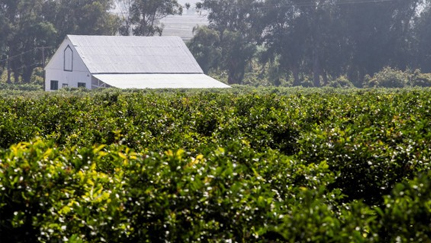Learn about wildfire safety and fire prevention tips
To minimize the risk of possible fire hazards in your operations and residence:
- Remove or isolate highly flammable and combustible materials and accelerants
- Train and conduct fire drills for employees and family members
- Develop a plan to evacuate livestock, or maintain an area where livestock can be moved, such as a plowed or heavily-grazed field or pasture with water and shade
- Work with your fire department to make sure an adequate water supply is available and that obstructions are removed from aisles, walkways, driveways and doors
- Provide a list of stored hazardous materials to your fire department, and update regularly
- Stress the importance of everyday maintenance and housekeeping
- Post signs and enforce “no smoking” bans in barns and around machinery and combustible and flammable materials
- Install, inspect and maintain appropriate smoke alarms, fire extinguishers and sprinklers in residences and farm buildings, on combines and tractors, and around mechanized equipment
When building or remodeling, meet the most-recently-approved requirements of your state and local building, electrical and fire codes. Where possible, use ignition-resistant or noncombustible building materials and:
- Install smoke detectors and fire alarms. Consider sprinkler systems and carbon monoxide detectors where appropriate
- Locate new buildings a safe distance from other structures to prevent the rapid spread of fire
- Regularly cut vegetation between barns or other farm buildings that are 50 feet or less from one another, and maintain a cleared area of 30 feet from those buildings
- Use approved fire doors on farm buildings
To minimize the risk of fire occurring on or near farm machinery:
- Make sure exhaust systems (including manifolds, mufflers and turbochargers) are free of leaks and in good working order. Avoid parking hot machinery on or near dry grass or other dry vegetation.
- Follow instructions when installing and operating farm machinery.
- Follow maintenance schedules and regularly clean off chaff, dust and other combustible materials.
- Keep fully charged fire extinguishers on tractors and combines, and near all farm machinery.
- Welders, grinders and cutting torches should only be used in clean areas, at least 35 feet away from any flammable and combustible materials. Welding curtains should be used to minimize the spread of sparks.
To minimize the risk of fire or explosion:
- Locate above-ground fuel tanks at least 40 feet away from buildings. For liquid propane storage tanks, follow NFPA 58 codes and standards.
- Maintain a 10-foot noncombustible area around all fuel tanks.
- Cure hay to the proper moisture content before baling or stacking/storing, to prevent spontaneous combustion.
- Don’t allow grass silage to become too dry. Also make sure upright silos don’t have air leaks.
- Store compressed gases in upright cylinders away from heat sources, and secure to a wall to prevent them from tipping over.
When conducting open burning:
- Always comply with state or local regulations regarding open burning. If necessary, secure permits and notify the local fire department.
- Don’t burn on high-wildfire-risk days, or days with high winds, low relative humidity, or dry and hot conditions.
- Build a firebreak around the area being burned.
- Keep fire-fighting equipment (such as rakes, shovels and water hoses) nearby. For large burns, it may be necessary to use tractors with discs, plows and large sprayers to aid in containment.
- If the fire is getting out of control, call the fire department immediately.
- Never leave a fire unattended.
To decrease the chance of your home and operation being susceptible to a wildfire:
- Remove vegetation from within at least 30 feet of residences and farm buildings.
- Create noncombustible zones around spaces where equipment, fuel, hay and chemicals are stored.
- Create and maintain appropriate types and sizes of fire guards around pastures and crops.
- Keep roofs free of combustible debris and materials, and enclose eaves.
- Don’t store combustible materials under elevated platforms, and enclose the areas under them with mesh screen to prevent burning embers from accumulating in these areas.
- Construct and update farm buildings using ignition-resistant and noncombustible materials, including siding, chimneys, roofs, doors and windows.
- Consider installing sprinklers to protect residences, farm buildings and vegetation.
Regional wildfire safety and risk management guides
Wildfire risks can vary from region to region due to variations in topography, climate and vegetation. To help property owners better understand their risks, the Insurance Institute for Business & Home Safety developed the following guides to help property owners assess their wildfire risk:
Wildfire safety and risk management brochures
Learn how to create defensible space and decrease wildfire risk around your property with the following quick reference brochures:
Get more information
Learn about Nationwide agribusiness insurance
Subscribe to the Ag Insight Center email newsletter
